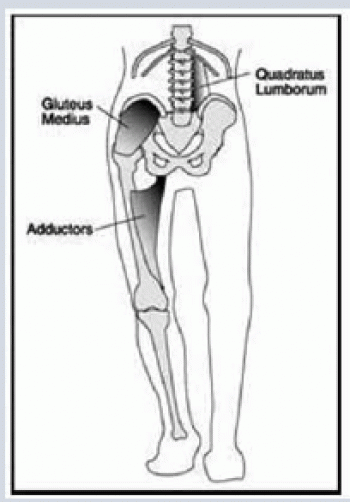Slings and Swings
Our bodies are made up of over 650 skeletal muscles. Often, when exercising, we work muscles individually or in isolation. But to train more functionally for golf and life, we should change our approach. Training integrated movement patterns as a whole will help us get stronger and move better. While muscles do have specific functions, they are meant to work in concert with each other to produce fluid, athletic movements. The golf swing is one such example of a complex series of movements that, when performed perfectly, leaves many of us amateurs thinking, "why can't I do that?"
Throughout the body, there are different sling structures that pair opposite side muscles to perform both athletic and everyday movements. Once you've build an adequate foundation physically, incorporating exercises to train these slings is extremely beneficial.
This article covers the four slings associated with the pelvis, which plays arguably the biggest role in our golf swing. It has to be mobile, stable, and powerful.
Here are the four structures and their role:
Posterior Oblique System

The posterior oblique system is made up of the latissimus dorsi muscle and the opposite side gluteus maximus. They are connected through fascia (a thin sheet of fibrous tissue). To illustrate fascia, think of the layers of an orange. When you peel an orange, each individual wedge has a casing around it and all of them are connected to each other. Our muscles (orange wedge) and fascia (casings) are the same way.
The posterior oblique system is the most represented system in our swing. The glutes provide our stability and power, and the lats provide a lot of our upper body power.
Anterior Oblique System
The muscles that make up the anterior oblique system are the internal oliques on one side, the
same side adductors and the opposite external obliques. The obliques create rotation in our golf swing. The adductors provide stability, rotational power and weight shift in the downswing.

Longitudinal System

The longitudinal system plays an important role in our swing. It's responsible for lumbar and pelvic stability. Not only does this help transfer power from our lower to our upper half, but it protects our low back from rotational forces. The system is made up of the deep muscles running in the center of the back and the connection with the with connections to the hamstrings.
Lateral System

The lateral system is often used to create stability in the pelvis. It consists of the gluteus medius on one side, the same side adductors, and opposite side quadratus lomborum. It prevents swaying/sliding in the swing and loss of power production.












